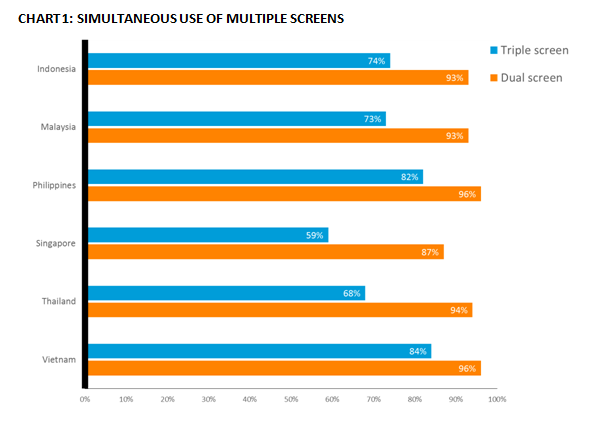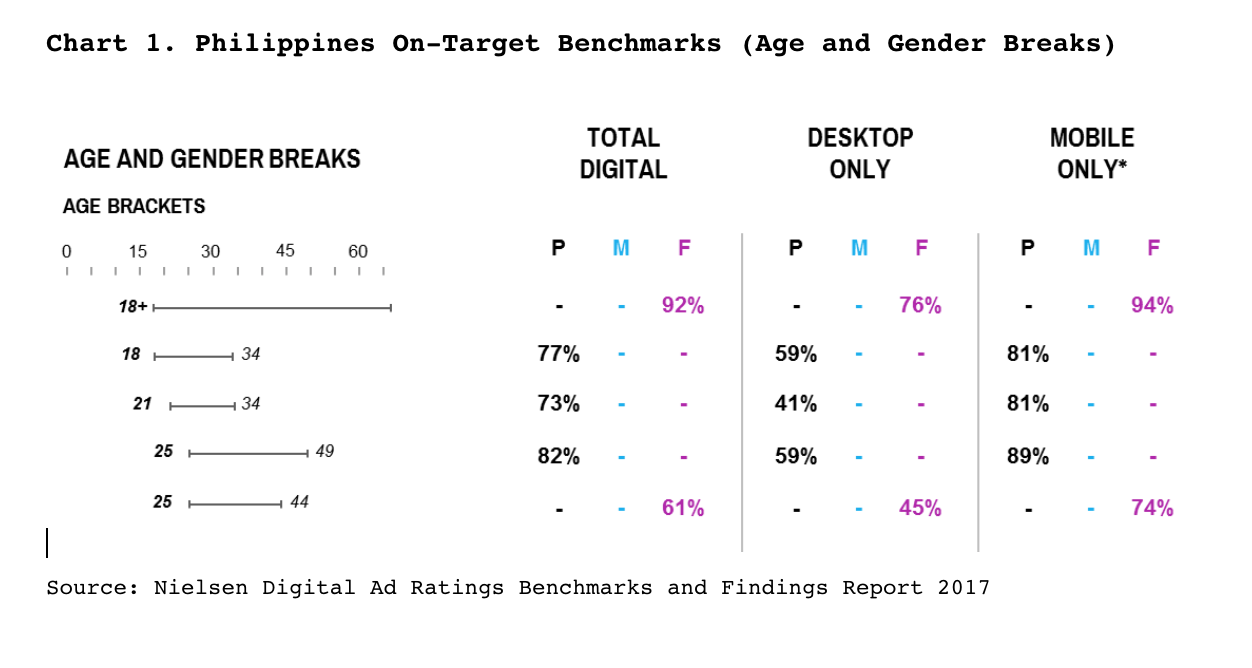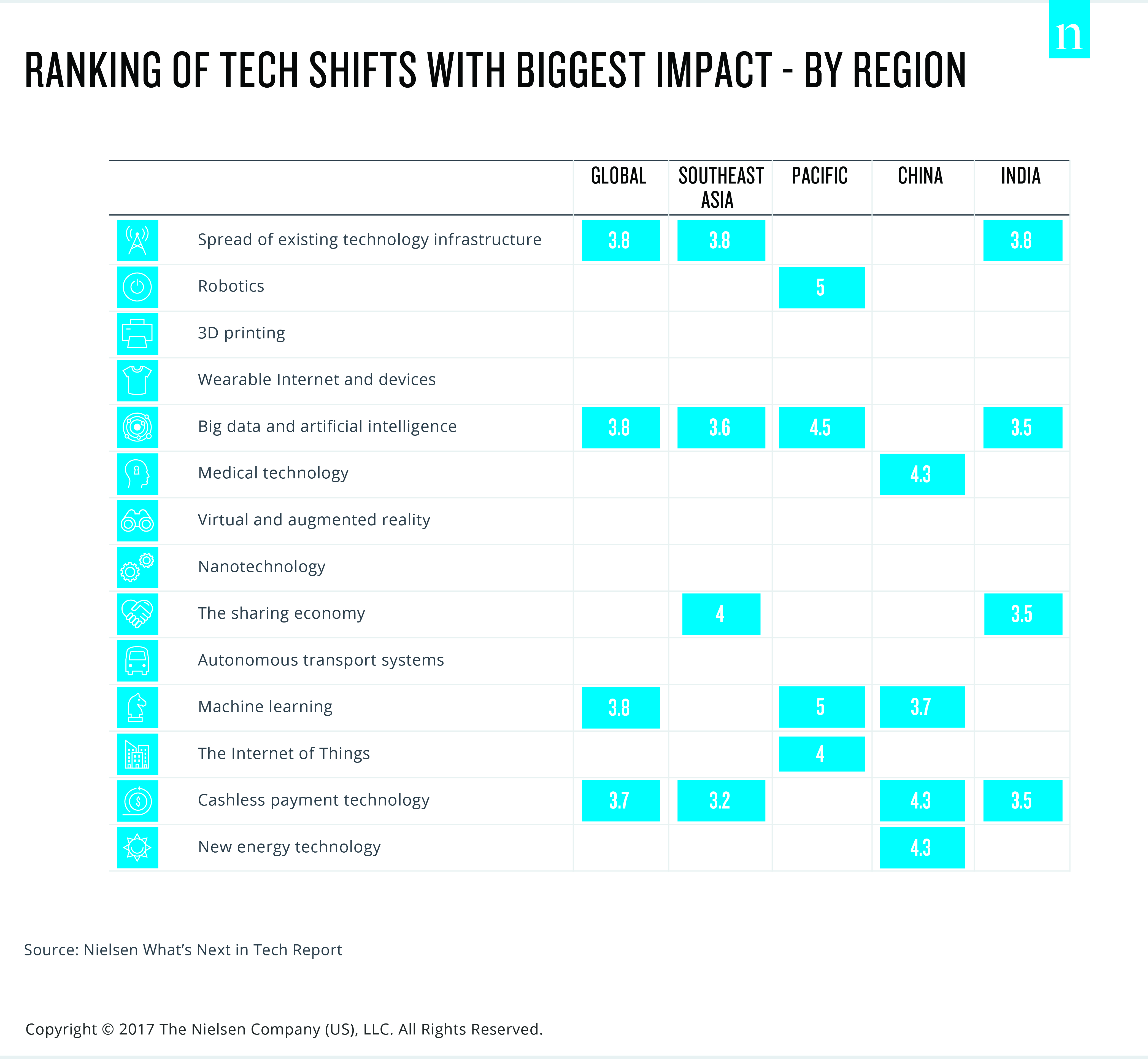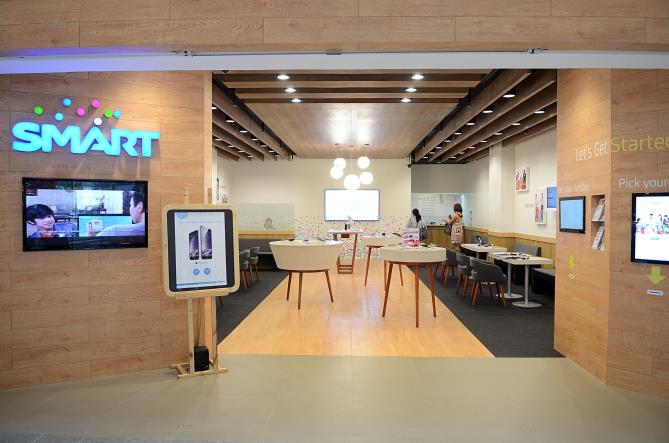Not only are more Filipinos getting connected to the Internet, they are now consuming media content voraciously through multiple screens, consequently increasing the opportunities for brands to connect with consumers exponentially, according to a report released Nielsen.
“The proliferation of smartphones and other mobile devices is driving the rise in internet usage and subsequently, how people are now consuming media content not just through one screen but multiple screens,” observes Stuart Jamieson, managing director of Nielsen Philippines.
The change in the digital consumers’ media consumption habits is more pronounced in how engaged these consumers are with multiple screens, according to the report. In the Philippines, almost all digital consumers or 96% engage with two screens simultaneously, and as many as eight in 10 engage with three screens simultaneously.

“The swift integration of connected devices into the lives of consumers is instrumental in the shift in the consumption of media, which includes multi-screening as a prevalent behavior,” notes Stuart Jamieson, Nielsen Philippines managing director. “Media owners and brands must continue to innovate to be able to capitalize on multi-screening behavior and deliver enhanced audience engagement with programs and advertising,” he advises.
While the assumption may be that the internet — and by extension, accessing the internet via mobile devices — is taking the place of traditional media, Nielsen’s Consumer and Media View study shows that this is not the case. Newspaper readership (broadsheets, tabloids, and regional newspapers) remains stable over the past year and steady quarter on quarter, with around 14% of people in National Urban Philippines being yesterday readers.
Radio listening also shows an upsurge from 53% yesterday listeners to 62% in the past year, while yesterday TV viewership also slightly exhibits increase from 93% to 95% over the past year.
Consumers want control and choice
While broadcast TV remains the most-used platform for delivery of rich video content, alternative platforms are emerging; more than seven in 10 digital consumers in the Philippines report watching TV content and movies via online sources such as video-on-demand. This is the second highest penetration of internet TV in the region after Thailand. YouTube is also increasingly acknowledged as a ‘TV channel’ or platform.
“Online delivery of video content adds yet another dimension to Filipinos’ TV viewing habits when planning and strategizing opportunities for brand reach and message resonance via video content,” says Jamieson. “People are using traditional media in union with the new media. When people dual- screen, they are may be watching TV while also accessing online content related to the TV programs they are watching or they may also be accessing unrelated content altogether. Dual screening behavior is fragmented and thus, it has become increasingly more important to understand how people behave across different media.”
According to the Cross Platform report, among the media formats, online consumption is most stable, as it is accessed throughout the day on various devices.
Specifically, online activity on desktops plateau during working hours and peak on laptops at night, while consistent use is observed on mobile phones and tablets throughout the day.
In contrast, newspaper readership and radio listening are most popular in the early morning before working hours, while TV viewing dips in the afternoon and increases drastically during primetime. Internet TV, however, follows online behavior rather than traditional TV behavior – it is consistent throughout the day.
Rising consumption of online video
Viewing online video content is a common pastime for digital consumers in the Philippines with the majority watching online videos at least weekly. Viewing in the Philippines is the second highest in the region at 85%, following Vietnam at 91%. Laptops/PCs are the most popular device used to view video on demand (89%), followed by TV screen (40%) and mobile phone (39%).
Importantly, online video advertising is proving an effective means of stimulating product search and purchase; 89% percent of Filipino digital consumers have been motivated to search for an item seen within online video advertising from a laptop/desktop, compared to 67% who do so after seeing an ad on a mobile device.
Six in 10 or 62% have made a purchase as a result of seeing an online video ad from a laptop/desktop versus 49% of Filipino digital consumers who bought a product after seeing an ad through a mobile device.








































































































